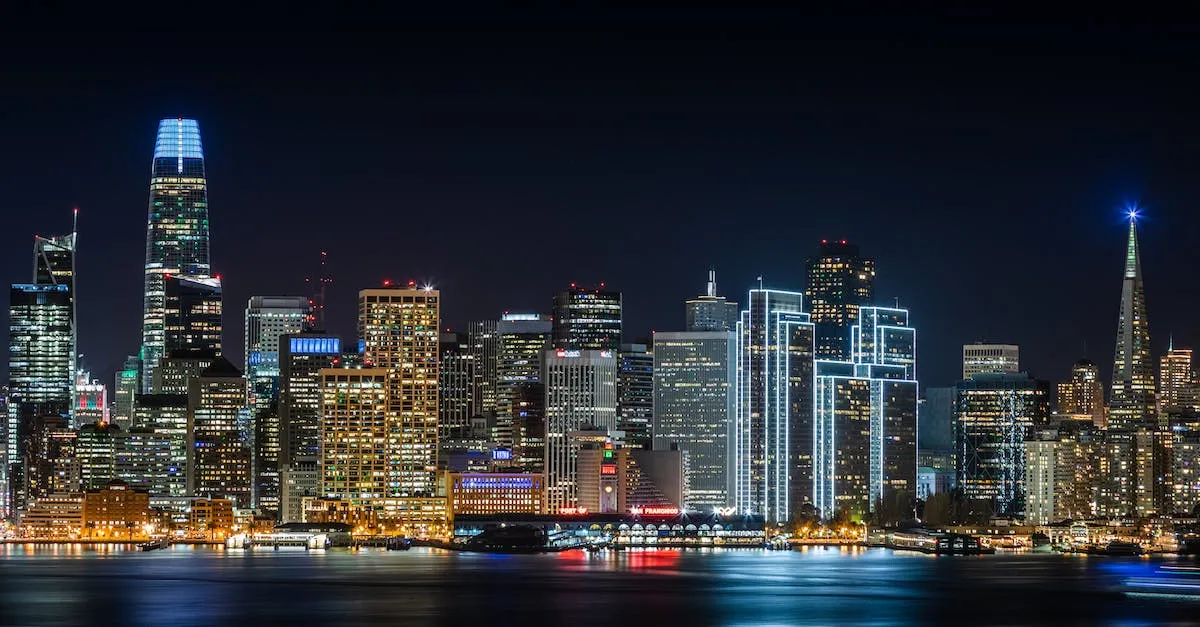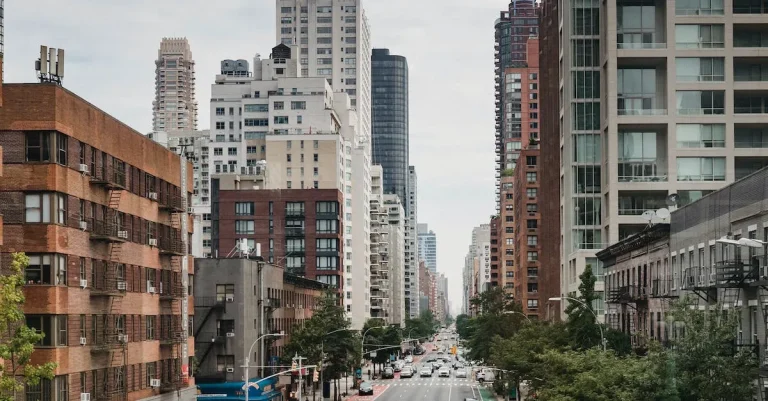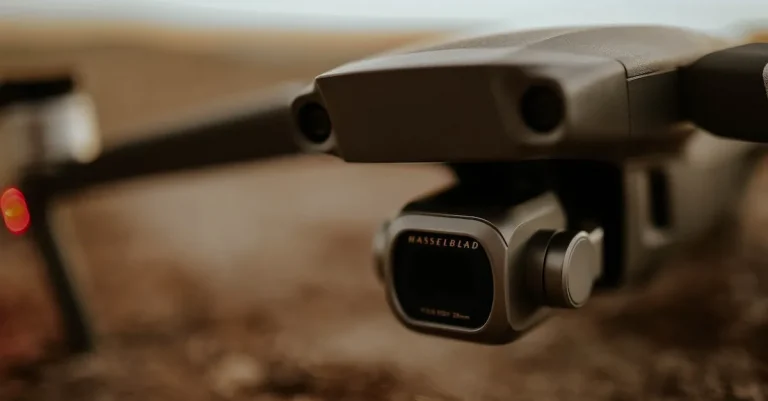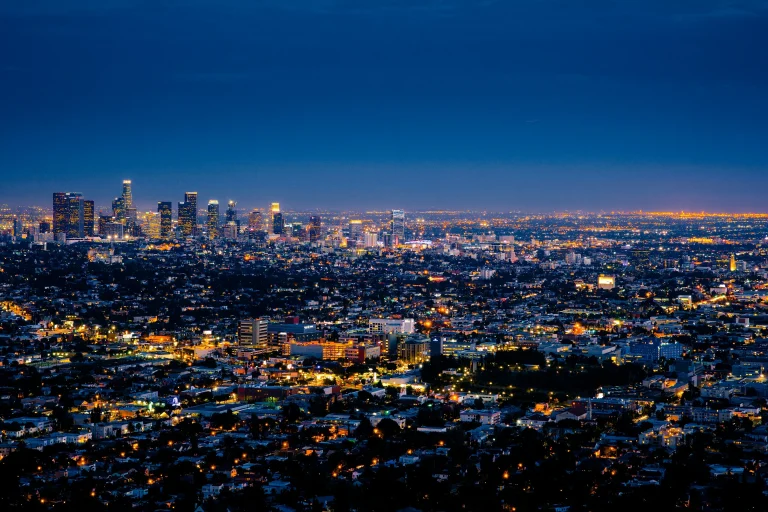How To Get From Walnut Creek To San Francisco: A Detailed Guide
If you need to get from Walnut Creek to San Francisco, you have several options for making the commute quickly and easily. Located about 25 miles east of San Francisco, Walnut Creek is a popular bedroom community for people who work in the city. With scenic views of the Diablo Valley and Mount Diablo along the way, the trip between Walnut Creek and San Francisco can be a pleasant excursion.
In a rush and need the quickest route? Your best bet is to take BART. The Walnut Creek BART station is centrally located and will get you to downtown San Francisco in just under 40 minutes. Just grab a seat on the Yellow Line heading towards SFO/Millbrae and you’ll be in the city in no time.
In this comprehensive guide, we’ll break down everything you need to know to plan your trip from Walnut Creek to San Francisco. We’ll cover the different transportation options, typical travel times, tips for an efficient and stress-free commute, and more.
By the end, you’ll have all the information you need to choose the best route and method of transportation for your regular commute or a one-time trip from Walnut Creek into The City by the Bay.
Driving Your Own Car
Route Options
When driving from Walnut Creek to San Francisco, you have a few different route options to choose from. The most popular route is to take Interstate 680 South and then merge onto Interstate 580 West. This route offers a relatively direct path to San Francisco and is typically the fastest option.
Another route you can consider is taking Highway 24 West to the Bay Bridge. This route is a bit longer but offers beautiful views of the bay as you cross the bridge into the city.
Typical Drive Times
The drive from Walnut Creek to San Francisco can vary in terms of time depending on traffic conditions. On average, it takes about 30 to 45 minutes to drive the approximately 25 miles between the two cities.
However, during peak traffic hours, such as weekday mornings and evenings, the drive can take significantly longer. It is always a good idea to check traffic conditions before you start your journey, especially if you have a time-sensitive appointment or event to attend in San Francisco.
Finding Parking in San Francisco
Finding parking in San Francisco can be a challenge, especially in popular tourist areas or during busy times. It is advisable to plan ahead and research parking options before you arrive. There are several parking garages and lots available throughout the city, but they can be quite expensive.
Alternatively, you can look for street parking, but be prepared to spend some time searching for an available spot. Keep in mind that parking regulations and restrictions vary from neighborhood to neighborhood, so be sure to read signs carefully to avoid any parking tickets.
Tips for an Easy Drive
To make your drive from Walnut Creek to San Francisco as smooth as possible, here are a few tips to keep in mind:
- Check traffic conditions before you leave to avoid any unexpected delays.
- Consider using a navigation app or GPS to help you navigate the best route and avoid traffic congestion.
- Bring change or a credit card for toll payments if you choose to take the Bay Bridge route.
- Be mindful of pedestrians and cyclists, especially when driving in downtown San Francisco.
- Give yourself plenty of time to find parking or consider using public transportation if parking is limited or expensive.
By following these tips and planning ahead, your drive from Walnut Creek to San Francisco can be a stress-free and enjoyable experience.
Taking BART
One of the most convenient and popular ways to travel from Walnut Creek to San Francisco is by taking BART (Bay Area Rapid Transit). BART offers a fast and efficient transportation option, allowing commuters to avoid the hassle of driving and parking in the city.
Getting to the Walnut Creek BART Station
The Walnut Creek BART Station is located at 200 Ygnacio Valley Road, making it easily accessible for residents of Walnut Creek and the surrounding areas. The station has a spacious parking lot available for commuters who prefer to drive to the station.
However, parking can fill up quickly during peak hours, so it is advisable to arrive early or consider alternative transportation options.
For those who prefer not to drive, there are several bus routes that connect to the Walnut Creek BART Station, including County Connection and Tri Delta Transit. These bus routes provide convenient access to the station for commuters who live in areas not directly served by BART.
Fares and Ticketing Options
BART fares are based on the distance traveled, with different fare zones throughout the system. To calculate your fare, you can use the fare calculator on the official BART website. It is important to note that BART operates on a fare gate system, so you will need to purchase a ticket or use a Clipper card to enter and exit the station.
Tickets can be purchased at the station using cash or credit/debit cards, and they are available in various denominations. If you plan on using BART frequently, it may be more convenient to purchase a Clipper card, which allows for easy tap-and-go payment at the fare gates.
Clipper cards can be purchased online or at select retail locations.
Key BART Stops in San Francisco
BART provides easy access to various key stops in San Francisco, making it convenient for commuters and tourists alike. Some of the notable BART stops in San Francisco include:
- Powell Street Station: Located in the heart of downtown San Francisco, this station is within walking distance to popular attractions such as Union Square and the Westfield San Francisco Centre.
- Embarcadero Station: Situated along the waterfront, this station provides access to the iconic Ferry Building and the Embarcadero Promenade.
- Mission Street Station: This station is located in the vibrant Mission District, known for its diverse culinary scene and vibrant nightlife.
Making the Most of Your BART Commute
While commuting on BART, there are several ways to make the most of your time. Consider bringing a book or your favorite podcast to keep yourself entertained during the journey. BART also offers free Wi-Fi at select stations, allowing you to catch up on emails or browse the internet.
Additionally, BART offers a “Quiet Car” option on select trains, where passengers are encouraged to keep noise to a minimum. This can be a great option for those who prefer a quieter commute.
Lastly, it’s important to stay informed about any service disruptions or delays. The official BART website and social media channels provide real-time updates on service changes, allowing you to plan your commute accordingly.
Riding the Bus
County Connection Buses from Walnut Creek
If you’re looking to travel from Walnut Creek to San Francisco, one convenient option is to ride the County Connection buses. County Connection operates several routes that connect Walnut Creek to various parts of San Francisco.
These buses are equipped with comfortable seating, air conditioning, and free Wi-Fi, making your journey enjoyable and productive. The bus stops are strategically placed throughout Walnut Creek, making it easy for residents and visitors to access public transportation.
County Connection offers affordable fares, and there are different fare options available, including single ride tickets, day passes, and monthly passes. Be sure to check their website for the most up-to-date fare information.
The buses are also equipped with bike racks, allowing you to easily transport your bicycle if needed.
When riding the County Connection buses, it’s important to be aware of the schedules and plan your journey accordingly. The buses operate on a fixed schedule, so make sure to check their website or use their mobile app to find the most convenient bus and departure times.
This will help you avoid any unnecessary waiting time and ensure a smooth trip to San Francisco.
AC Transit Buses from the East Bay
Another option for traveling from Walnut Creek to San Francisco is to take the AC Transit buses. AC Transit operates several routes that connect the East Bay to San Francisco, including direct routes from Walnut Creek.
These buses provide a convenient and reliable way to commute between the two cities.
AC Transit offers a variety of fare options, including cash fares, Clipper card payments, and discounted passes for seniors and disabled riders. The buses are equipped with comfortable seating, air conditioning, and some even have USB charging ports to keep your devices powered during the journey.
To plan your trip on AC Transit, you can use their website or mobile app to find the most convenient bus routes and schedules. The buses operate throughout the day, so you can easily find a bus that suits your travel needs.
Just make sure to check the schedules ahead of time to avoid any delays or missed connections.
Muni Buses Around San Francisco
Once you arrive in San Francisco, you can rely on the Muni buses to get around the city. Muni operates an extensive network of buses that cover various neighborhoods and attractions in San Francisco. Whether you’re heading to Fisherman’s Wharf, the Golden Gate Park, or the Financial District, there’s likely a Muni bus route that can take you there.
Muni buses are known for their iconic look, with their distinct red color and classic design. They offer a convenient and affordable way to explore the city, with fares that can be paid with cash or using a Clipper card.
The buses are equipped with ramps and low floors for easy accessibility, making them suitable for all passengers.
To plan your journey on the Muni buses, you can use their website or mobile app to find the most convenient routes and schedules. Muni buses operate frequently, so you won’t have to wait long for the next bus to arrive. Just remember to have the correct fare ready when boarding the bus.
Whether you choose to ride the County Connection buses from Walnut Creek, the AC Transit buses from the East Bay, or the Muni buses in San Francisco, taking the bus is an excellent way to get from Walnut Creek to San Francisco.
It’s convenient, affordable, and environmentally friendly, allowing you to sit back, relax, and enjoy the journey.
Carpooling and Vanpooling
Commuting from Walnut Creek to San Francisco can be a daunting task, but carpooling and vanpooling can make the journey easier, more affordable, and even enjoyable. By sharing rides with others, you can reduce traffic congestion, save money on gas and tolls, and contribute to a greener environment.
Here are some tips on how to make the most of carpooling and vanpooling:
Finding a Carpool Group
Joining an existing carpool group is a convenient option for those who prefer not to organize their own carpool. There are several websites and apps available that connect commuters with potential carpool partners. Some popular platforms include CarpoolWorld, Scoop, and Commute.org.
These websites allow you to search for carpool groups in your area and find like-minded individuals who have similar schedules and destinations. Joining a carpool group not only saves you money and reduces your carbon footprint, but it also provides an opportunity to make new friends and network with fellow commuters.
Organizing Your Own Carpool
If you prefer more control over your commuting schedule, organizing your own carpool can be a great option. Start by talking to your colleagues, neighbors, or friends who commute in the same direction. Discuss the possibility of carpooling and find out if anyone is interested.
Once you have a group of people willing to carpool, establish a schedule and determine the pick-up and drop-off locations. Consider using a rideshare app like Waze Carpool or Splitwise to manage the logistics and expenses of the carpool.
Organizing your own carpool allows for flexibility and customization, making your daily commute a more enjoyable experience.
Benefits of Carpooling
Carpooling and vanpooling offer numerous benefits beyond just saving money and reducing traffic congestion. Here are some of the advantages:
- Cost Savings: Sharing the cost of gas, tolls, and parking expenses can significantly reduce your monthly commuting expenses.
- Reduced Stress: By sharing the driving responsibilities, you can relax and enjoy the ride while someone else takes the wheel.
- Environmental Impact: Carpooling reduces the number of vehicles on the road, resulting in decreased emissions and a greener environment.
- Productivity: Use your commute time to catch up on emails, read a book, or even take a power nap, increasing your overall productivity.
- Networking Opportunities: Carpooling provides a chance to meet new people and expand your professional network.
Carpooling and vanpooling are not only practical solutions for daily commuting but also contribute to a more sustainable and connected community. So why not give it a try and see the benefits for yourself?
Other Options
Taking a Rideshare (Uber/Lyft)
If you prefer a more convenient and private mode of transportation, taking a rideshare service like Uber or Lyft is a great option. With just a few taps on your smartphone, you can have a comfortable ride from Walnut Creek to San Francisco.
These services are available 24/7, so you can travel at any time that suits your schedule. Additionally, rideshare services often offer competitive pricing, especially if you split the fare with friends or fellow travelers.
Traveling by Amtrak
If you prefer a more scenic and relaxed journey, traveling by Amtrak is an excellent choice. Amtrak offers several routes from Walnut Creek to San Francisco, including the Capitol Corridor and San Joaquins lines.
These trains provide comfortable seating, onboard amenities, and stunning views of the Bay Area. Moreover, Amtrak stations are conveniently located within walking distance of popular destinations in San Francisco, making it easy to explore the city once you arrive.
Biking Between Walnut Creek and San Francisco
For the fitness enthusiasts and nature lovers, biking between Walnut Creek and San Francisco is an adventurous and eco-friendly option. The Bay Area boasts an extensive network of bike lanes and trails, allowing cyclists to enjoy a scenic ride while avoiding heavy traffic.
One popular route is the Iron Horse Regional Trail, which connects Walnut Creek to Pleasanton and offers beautiful views along the way. Once you reach San Francisco, you can explore the city’s bike-friendly streets and iconic landmarks at your own pace.
Whichever option you choose, it’s important to plan your journey ahead of time and consider factors such as travel time, cost, and personal preferences. This will ensure a smooth and enjoyable trip from Walnut Creek to San Francisco.
Conclusion
With several efficient and affordable options like BART, AC Transit buses, and casual carpooling, getting between Walnut Creek and San Francisco doesn’t have to be a hassle. By planning your route and timing in advance, you can make the commute seamless and stress-free.
Choosing the right mode of transportation for your needs and schedule will ensure you get to and from Walnut Creek and San Francisco safely and comfortably. Use this guide to explore all your options and find the best way to connect these two vibrant Bay Area cities.








